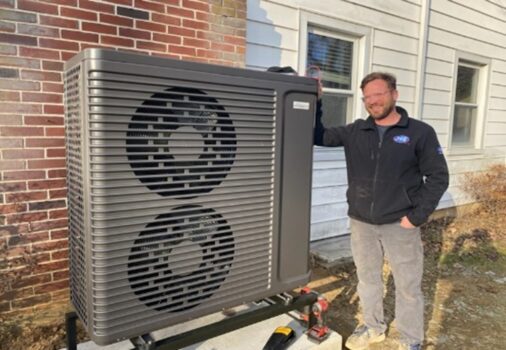by Chris Decato, Product Manager, HSSC
In the quest for sustainable living and energy efficiency, air-to-water heat pumps have emerged as one of the most promising technologies. These systems utilize ambient air to extract and transfer heat into a water-based heating system, offering an environmentally friendly alternative to traditional heating methods. However, to harness their full potential, it is important to keep a couple things in mind.
- Keep your air-to-water Heat Pump Uncovered Year-Round
One common mistake made by homeowners is covering their air-to-water heat pumps, particularly during colder months. Covering the unit can hinder its performance and efficiency. Air-to-water heat pumps operate by absorbing heat from the surrounding air, even in chilly conditions. When the unit is covered, it restricts airflow, impeding the heat exchange process and reducing overall efficiency. Additionally, covering the unit can lead to moisture buildup, which may cause corrosion and other damage over time. Therefore, it’s crucial to allow adequate airflow around the heat pump year-round by avoiding any obstructions or coverings.
- Installation, Location-Location-Location (and elevation!)
The elevation of the heat pump above the ground during installation is equally as important. Placing the unit at least 12 inches above the ground offers several benefits that contribute to its efficiency and longevity. Firstly, elevating the heat pump helps prevent debris, such as leaves, dirt, and snow, from accumulating around the unit. Accumulated debris can obstruct airflow and impede the heat exchange process, diminishing the system’s efficiency. Additionally, raising the unit reduces the risk of water damage, particularly in flood-prone areas or during heavy rainfall. Elevating the heat pump also facilitates easier access for maintenance and servicing. Technicians can inspect and perform routine maintenance tasks more effectively when the unit is elevated, ensuring optimal performance and extending the system’s lifespan.
Using just these two considerations, homeowners can not only reduce their energy consumption and utility bills but also contribute to a more sustainable future.

